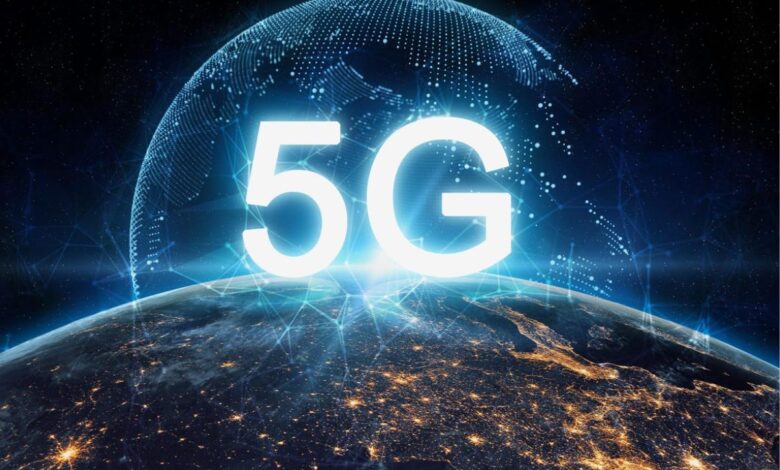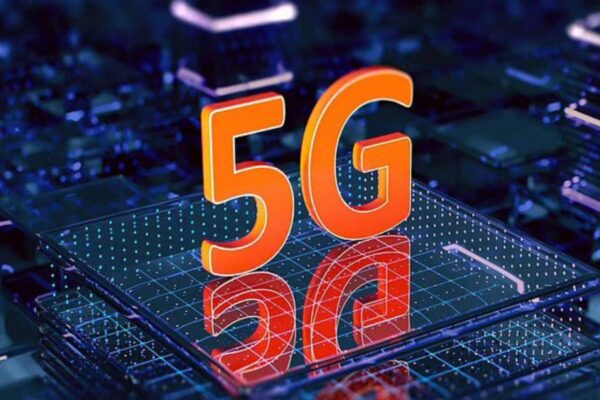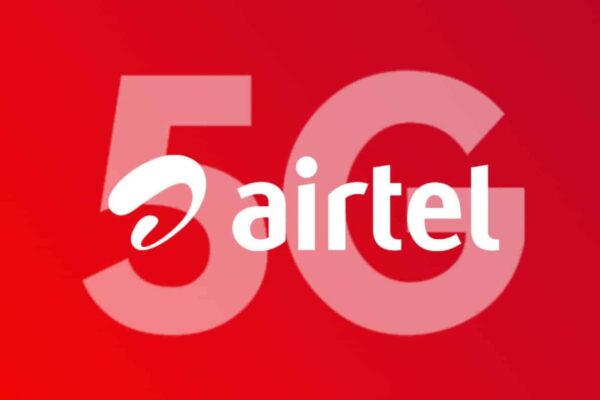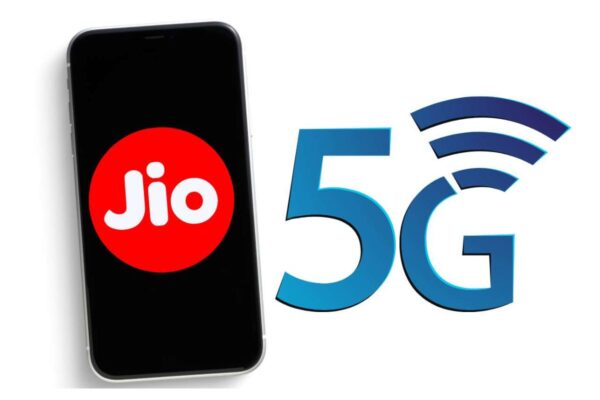5G Service is now Available; How Jio, Airtel and Vodafone will introduce 5G in India?

India already has 5G service available; how Jio, Airtel, and Vodafone Idea will introduce 5G in India.
Finally, 5G service is throughout parts of India. Major telecom companies like Jio and Airtel want to roll out 5G in most cities by the end of 2023. Anyone who bought a 5G phone can now access the most recent network.
Certain smartphone manufacturers must first submit an upgrade to activate 5G on smartphones. Here are basic elements regarding 5G that you must be aware of now that it is available in India.
5G service is already available in India. Here are the things you need to know
Even though your smartphone is 5G capable, you won’t be able to use it right now. To help 5G on smartphones, the bulk of manufacturers must release an advancement. Not all 5G phones need an upgrade for this, keep this in mind.
If the “mobile network” settings don’t show a 5G choice, your 5G smartphone hasn’t yet received an update that will allow compatibility with the most current network.
You need to complete three steps for 5G to function. You need a smartphone that supports 5G and a SIM card that supports it.
Then, to use the most recent network, you must change the settings on your phone. Go to the settings tab, Connections, or Mobile Network to choose the 5G network mode.
Users of Airtel and Reliance Jio can experience 5G using their current SIM card. This merely indicates that using the 5G network does not need a SIM switch.

The 5G network is tremendously fast in comparison to the old network. We witnessed 5G with download and upload speeds of 306Mbps and 25.4Mbps, respectively, at the India Mobile Congress (IMC) event. The download and upload speeds delivered by 4G, in contrast, were just 50.5 Mbps and 1.87 Mbps, respectively. However, this is not the highest.
According to a study by Ookla, the spectrum band that 5G employs affect how well it performs. “The median download speed on Jio’s 5G network, which operates on the C-band, ranges from 606.53Mbps to 875.26Mbps (n=78).
The median download speed for 5G networks employing the lower 700 MHz frequency band (n=28) is less than 100 Mbps, with a range of 78.69 Mbps to 95.13 Mbps. Airtel, on the other hand, showed 5G at rates ranging from 365.48 Mbps to 716.85 Mbps using only its C-band spectrum: “The research found.
According to certain sources, people may not be able to fully use the 5G network in eligible cities if a 5G cell tower is not close by. This simply means that a person won’t experience maximum bandwidth speeds and network capacity unless they are in an area with high 5G coverage. Downloading the “Speedtest by Ookla” app allows users to locate 5G towers in a suitable city.
Jio is now providing 5G networks in Delhi, Varanasi, Mumbai, and Kolkata. The telecom provider aspires to achieve nationwide 5G coverage by December 2023.

Airtel has started deploying 5G in Delhi, Mumbai, Chennai, Bengaluru, Hyderabad, Siliguri, Nagpur, and Varanasi. It plans to bring out 5G by the end of this year in all major metro areas, and by December 2023, it will be accessible in all significant Indian cities.
Vodafone Idea hasn’t yet offered any specific details about the deployment of 5G. The telecom company promised to quickly roll out 5G in India, though.
In certain cities, Jio and Airtel are presently providing free 5G trials. Although they haven’t started charging yet, it’s expected that the telecoms will soon reveal the prices of 5G plans and other details.
Airtel promised to offer 5G plans at the same prices as 4G prepaid plans, while Reliance Jio said that its 5G plans would be given at the lowest pricing.
5G Service Rollout
It is predicted that only a small number of consumers will be the focus of the initial rollout of 5G technology, which Prime Minister Narendra Modi formally launched on October 1. A few cities have been chosen for the first phase of deployment. There are many of them, including Ahmedabad, Bengaluru, Chandigarh, Chennai, Delhi, Gandhinagar, Gurugram, Hyderabad, Jamnagar, Kolkata, Lucknow, Mumbai, and Pune.
The fifth-generation network will progressively be made available to more cities, Tier-II cities, Tier-III cities, and villages. The operators, Reliance Jio, Airtel, Vodafone-Idea, and BSNL, have different national coverage objectives.
By March 2024, all of India will have access to 5G services, according to Airtel CEO Sunil Mittal. By the end of 2023, everyone will have access to Jio 5G, on the other hand.
Bharti Airtel will reportedly start out charging the same amount for 5G services as it does for 4G. Later, a fresh set of tariffs will go into effect. As soon as the auctions concluded earlier this year, the company reportedly ordered 5G equipment from Ericsson, Nokia, and Samsung. Jio, meanwhile, hasn’t made its 5G pricing available.
This article explains how Jio, Airtel, and Vodafone Idea will roll out 5G in India.
Each of the three major telecom companies in India will give the Prime Minister a use case to demonstrate the possibilities of 5G technology.
Through Mukesh Ambani’s Reliance Jio, a teacher at a school in Mumbai will be able to speak with students in three different locations: Maharashtra, Gujarat, and Odisha.
According to government sources, this will demonstrate how 5G may enhance education by eliminating physical distance and bringing students and teachers closer together. It will demonstrate Augmented Reality’s (AR) potential and how it may be used to remotely train pupils across the country without the need for an AR device.
The Airtel demo, a lively and interesting educational experience that employs virtual reality and augmented reality to teach kids about the solar system, will be seen by a girl from Uttar Pradesh. The girl will appear on the Dias via hologram and speak with the prime minister about her experiences in school.
The Vodafone Idea test case will demonstrate how to keep construction workers secure in a Delhi Metro tunnel that is still under construction by creating a “digital twin” of the tunnel on a computer screen. The digital twin allows for real-time safety alerts to be sent to workers from a distance.
Modi will watch a live demonstration of the use of VR and AI to track the work in progress from the dias.
Precision drone-based farming, high-security routers, AI-based cyber threat detection platforms, automated guided vehicles, smart ambulances, augmented reality/virtual reality/mixed reality in education and skill development, sewage monitoring system, smart-Agri program, and health diagnostics are just a few of the numerous use cases that will be presented to the prime minister during the exhibition.
Thanks to 5G’s speed, which is far faster than 4G and enables lag-free connectivity, millions of connected devices may be able to transfer data in real-time.
It will allow for exceptionally stable connectivity, low latency, and high data rates. It will also increase energy, spectrum, and network efficiency.

Thanks to 5G technology, millions of Internet of Things devices will be connected, allowing for the delivery of critical services like telesurgery and autonomous vehicles among others, as well as higher-quality video services with mobility at quick speeds.
Among other things, it will help with the real-time monitoring of disasters, precision farming, and lowering the use of humans in hazardous industrial processes like deep mines and offshore operations. Contrary to present mobile communication networks, the needs for each of these different use cases can be customized inside the same network.
5G can enable solutions for e-health, connected cars, more immersive augmented reality and metaverse experiences, life-saving use cases, and advanced mobile cloud gaming, among other things. It can also enable ultra-low latency connections that allow full-length, high-quality videos and movies to be downloaded to a mobile device in a matter of seconds (even in congested areas).
“5G has the potential to transform Indian society by bringing about new commercial prospects and societal advantages. It will assist the nation in overcoming previous development obstacles, foster innovative business concepts and technology developments, and advance the “Digital India” goal “a declaration inside of another.
India, the second-largest smartphone market in the world after China, has finally seen the launch of 5G services after years of careful planning.
In India’s most recent telecom spectrum auction, bids totalling a record 1.5 lakh crore were made, and Mukesh Ambani’s Jio won over half of the airwaves sold with a bid of 88,078 crores.
Sunil Bharti Mittal’s Bharti Airtel, which he owns, successfully bid 43,084 crores, and Vodafone Idea Ltd. bought spectrum for 18,799 crores.
Even though some considered their participation in the auction as just another flashpoint in their dispute with Ambani, the company led by Gautam Adani paid 212 crores for 400 MHz. Adani Group purchased the 26 GHz spectrum, which is excellent for constructing a private network for end-to-end communication.
A strong 5G ecosystem that can handle IoT (Internet of Things), M2M (Machine-to-Machine communication), AI (Artificial Intelligence), edge computing, and robotics use cases is necessary. In the auction, this demand was consolidated.
The Telecom Department revised the Right of Way (RoW) Rules in August 2022, capping the price of installing 5G small cells and optical fibre cable on street furniture, and lowering the fees for getting permission to construct towers and lay cables.
The Department of Telecom worked with the IITs, IISc Bengaluru, and SAMEER to establish a 5G testbed in 2018 to advance technology.
A 5G hackathon was initiated in 2020, according to the official release, to encourage entrepreneurs’ use-case ideation and prototyping, which has encouraged the development of innovative solutions.
An inter-ministerial committee on 5G use cases has been in operation since 2021 in partnership with 12 central ministries, enabling the construction of 5G use-case labs. To facilitate the deployment of phones in the 5G ecosystem, industry consultations have been held.
In addition, C-DOT is working with local companies and entrepreneurs to build a 5G Radio Access Network (RAN). In collaboration with TCS and Tejas Networks, a successful test of 4G Core has already been performed.
All of these will help people heed the prime minister’s call to arms, “Jai Anusandhan.
All of these projects are game-changers for India’s industrial and telecom ecosystem, producing locally developed carrier-grade 5G stacks and innovative, important 5G use cases. The statement was made.
edited and proofread by nikita sharma




